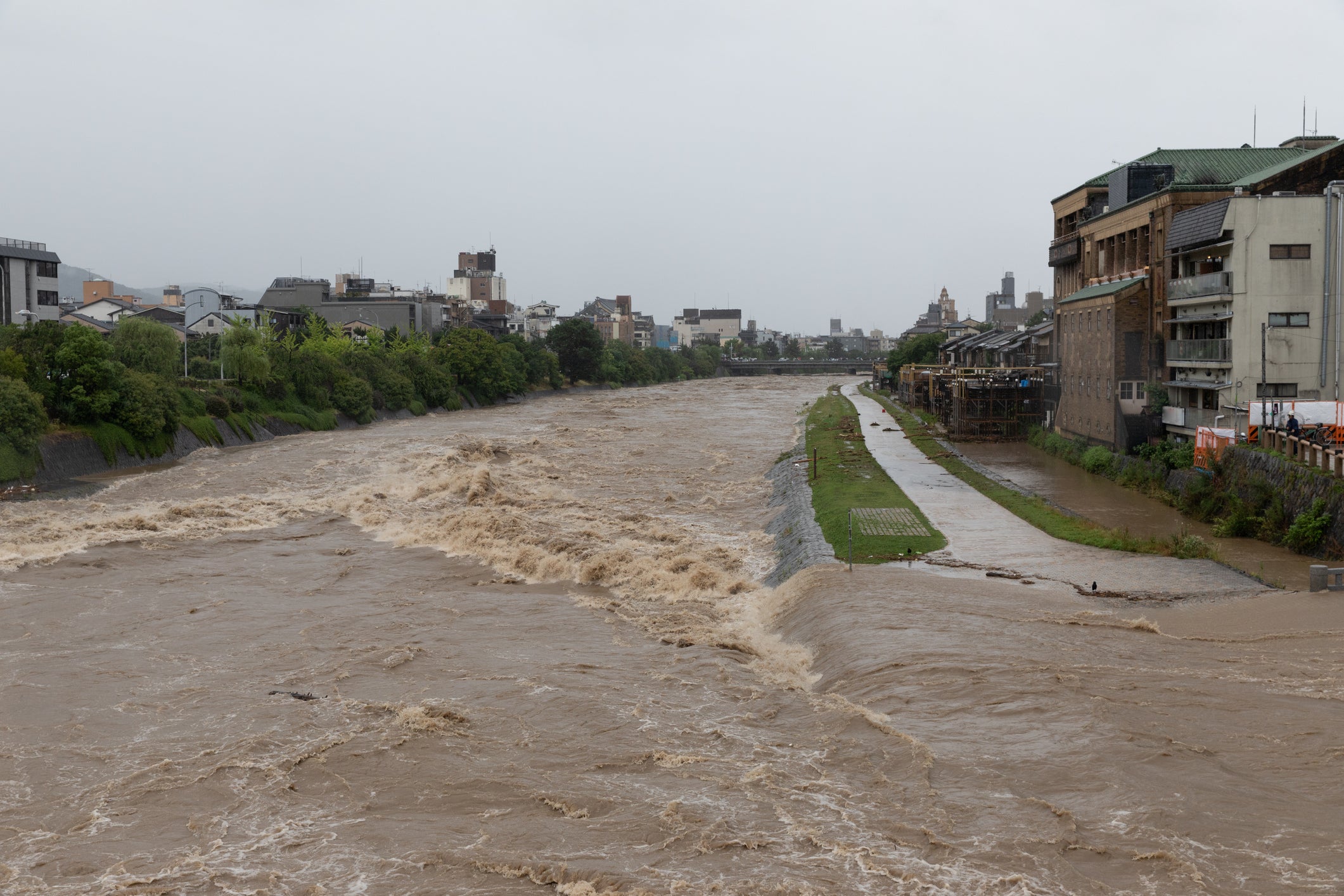Key points and precautions when choosing a shelter during a flood
table of contents
Introduction
1.Choose an evacuation center located in a high place
2. Check the water resistance of the shelter
3. Consider access and transportation to the evacuation center
4. Check the completeness of evacuation center equipment and supplies
5. Ensure the safety and security of the shelter
6. Check evacuation center information
summary
Introduction
Floods are a serious disaster for local residents. Selection of evacuation center is very important in ensuring life safety and comfortable evacuation life. Below, we will explain in detail the points and precautions to take when choosing a shelter during a flood.
1.Choose an evacuation center located in a high place
1-1 Check altitude
When choosing a shelter, it is important to check the elevation. Elevation varies depending on the topography and topography of the area. Use local maps and topographical information to find locations with higher elevations compared to low-lying and riverine areas at high risk of flooding.
1-2 Choose a hill or high ground
The best places to consider for shelter are hills and high ground. Hills and high ground are safer places during floods because they are less likely to flood when water rises. It is important to study the surrounding terrain and find areas where water is difficult to reach.
1-3 Use the upper floors of the building
When using a building as a shelter, it is best to choose an upper floor if possible. During a flood, evacuation shelters located on higher floors can be said to be safer, as the risk of water intrusion increases the lower the floor. Also, make sure the building structure is water resistant.
1-4 Distance from rivers and water sources
Distance from rivers and water sources is also a factor to consider during floods. Places near rivers and water sources may be at increased risk of flooding due to rising water levels. You can improve the safety of your shelter by staying as far away from rivers and water sources as possible.
1-5 Utilizing local flood hazard maps
It is also important to utilize flood hazard maps provided by local governments and related organizations. Flood hazard maps show areas at high risk of flooding and the location of evacuation centers. Using this information as a reference, you can choose an evacuation center located in a high place.
2. Check the water resistance of the shelter
2-1 Building structure and water resistance
Make sure that the structure and materials of the building used as a shelter are water resistant. Water-resistant construction and waterproofed materials can minimize water ingress during floods. A sturdy structure such as concrete or steel is preferred.
2-2 Prevention of flooding above the floor
Another important factor is whether or not the floor of the evacuation center will allow water to flood above the floor. Above-floor flooding refers to when water rises above the floor level and enters the building during a flood. Make sure that the floor of the evacuation center is at a certain height or that measures are taken to prevent flooding above the floor. This will ensure a safe life within the evacuation center.
2-3 Water resistance of electrical equipment and wiring
Water resistance is also important for electrical equipment and wiring in evacuation centers. The combination of water and electricity is extremely dangerous during floods. Make sure your shelter's electrical equipment is waterproof or located in a safe location to withstand flooding. This will minimize the risk of electric shock or fire.
2-4 Water resistance of fixtures and equipment
Furnishings and equipment in evacuation centers must also be water resistant. Make sure that furniture and equipment that could come into contact with water during a flood, such as beds, tables, chairs, toilets, and shower rooms, are made of waterproof materials. This ensures the safety and comfortable evacuation life of users.
2-5 Securing an evacuation site in case of emergency
During floods, it is important to secure an emergency evacuation site within the evacuation center. Check to see if your evacuation center has an emergency evacuation site in case of an emergency, such as an elevated location, emergency evacuation stairs, or rooftop access.
3. Consider access and transportation to the evacuation center
3-1 Proximity to evacuation center
When choosing a shelter, consider the distance from your home or workplace. By choosing a shelter located as close as possible, you can evacuate quickly in an emergency. Check the evacuation shelter information provided by nearby regions and municipalities to find the closest and most convenient evacuation shelter.
3-2 Access to major roads
Check the road conditions to the evacuation center. During floods, roads and bridges may be submerged, making it difficult to pass. When choosing a shelter, it is important to check whether it has easy access to major roads and to minimize the risk of traffic congestion and flooding.
3-3 Securing means of transportation
During floods, non-motorized transportation methods such as walking and cycling are important. Consider the distance to the evacuation center and local traffic conditions and prepare an appropriate means of transportation. Also, check the availability of public transportation and whether special evacuation transportation is provided.
3-4 Securing parking and bicycle parking spaces
If you are considering evacuating by car or bicycle, check to see if there are parking lots or bicycle parking areas near the evacuation center. It's a good idea to find out if the shelter offers enough space or if there are alternative parking options nearby.
3-5 Confirm evacuation route
It is also important to check the evacuation route to the evacuation center in advance. Check evacuation routes and evacuation plans provided by local governments and agencies to understand the safest and most effective routes. It is also important to be aware of any construction work or road closures that may impede a quick evacuation.
4. Check the completeness of evacuation center equipment and supplies
4-1 Drinking water supply
Evacuation centers require an adequate supply of potable water. Depending on the evacuation center's facilities and local government measures, drinking water tanks or bottles may be available. When choosing a shelter, make sure there is an adequate supply of drinking water.
4-2 Food stockpiling
Evacuation centers may stockpile food in anticipation of long-term stays. Check to see if stocked foods can provide balanced nutrition. Also, if you have special dietary restrictions such as food allergies, it is important to check how to accommodate them.
4-3 Toilet and shower facilities
Evacuation centers must have sanitary facilities such as toilets and showers. When choosing a shelter, check the number of toilets, cleanliness, and availability of showers. Cleaning systems and provision of sanitary products to maintain hygiene are also important factors.
4-4 Enhancing disaster tools and supplies
It is desirable that the evacuation center is fully stocked with disaster tools and supplies. This includes emergency lights, radios, blankets, first aid kits, batteries, etc. When choosing a shelter, make sure it has these supplies in place.
4-5 Provision of electricity and communications
It is important that electricity and communications are provided in evacuation centers. Check to see if your shelter has an emergency generator, backup power source, or a place to charge your cell phone. This allows you to receive information and have a means of contact in case of an emergency.
5. Ensure the safety and security of the shelter
5-1 Appropriate selection of shelter
When choosing a shelter, consider the safety of the building, including its earthquake resistance, wind resistance, and flood protection. It is important to refer to the disaster prevention information and building standards guidelines for buildings provided by local governments and related organizations. Also, if you have multiple evacuation options, choose one that is safe.
5-2 Evacuation center management and monitoring
It is important that shelters are properly managed and monitored. Evacuation centers may have operational staff and safety personnel. They will take the necessary measures to ensure the safety of patrons and maintain order.
5-3 Entrance/exit management
It is desirable that evacuation centers have controlled entrances and exits. Appropriate number and placement of entrances and exits, ID verification and registration procedures will be carried out as necessary. This helps minimize unauthorized access and security risks.
5-4 Ensuring user privacy and safety
Evacuation centers will have measures in place to ensure the privacy and safety of users. It is important to properly manage personal information and take measures to prevent trouble and violence within evacuation centers. Also, check whether the needs and protections of specific users, such as women, children, and the elderly, are taken into account.
5-5 Security measures during disasters
Security measures during disasters are also important at evacuation centers. This includes installing emergency lighting, security cameras, and deploying personnel such as security guards and self-defense forces to maintain a safe environment. When choosing a shelter, make sure that these security measures are in place.
6. Check evacuation center information
6-1 Local government website and contact information
Local authorities provide evacuation information during floods. Visit your local government website for a list of flood evacuation shelters, locations, and contact information. You can also directly contact your local government's disaster prevention department or emergency contact information.
6-2 Disaster countermeasure apps and websites
Some regions offer disaster preparedness apps and websites. By using these information sources, you can obtain information on evacuation centers, evacuation routes, emergency contacts, etc. in the event of a flood. Depending on the region, you may be able to check the type of evacuation center, the number of people it can accommodate, and the latest availability status.
6-3 Media coverage during disasters
When a disaster occurs, media (TV, radio, internet news, etc.) may provide information on evacuation shelters during floods. When a disaster occurs, check these media for information.
6-4 Disaster countermeasure guidelines and pamphlets
Local governments and related organizations may provide disaster preparedness guidelines and pamphlets. These materials include information on how to choose and use evacuation shelters, and contact information in case of an emergency. You can obtain these materials by contacting your local government office or disaster prevention department.
6-5 Community and regional information sharing
You may be able to obtain information about evacuation shelters by participating in your local community or local disaster prevention network. Participate in local disaster prevention activities and meetings and share information about local evacuation centers.
summary
Choosing a shelter during a flood is an important decision to ensure a safe life. Choose a shelter that is located at an elevated location and is water resistant, and consider multiple factors such as access and transportation, availability of facilities and supplies, safety and security, and information verification. Make sure to actively utilize information provided by local governments and related organizations and evacuate early.








